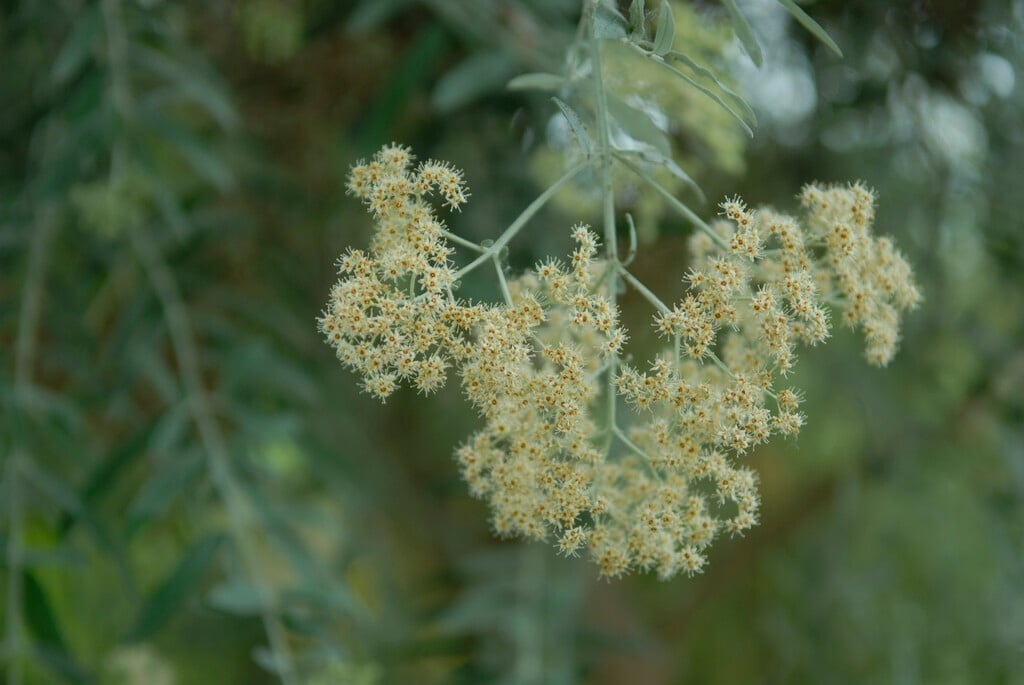Buddleja saligna
bastard olive
Tender evergreen shrub, up to 2.5m tall with lance-shaped, olive green leaves. Clusters of honey scented, small creamy coloured flowers are produced from late summer into autumn, but only in warmer areas and it requires winter protection
Size
Ultimate height
1.5–2.5 metresTime to ultimate height
5–10 yearsUltimate spread
1.5–2.5 metresGrowing conditions
Moisture
Moist but well–drained, Well–drainedpH
Neutral, Alkaline, AcidColour & scent
| Stem | Flower | Foliage | Fruit | |
| Spring | Green | |||
|---|---|---|---|---|
| Summer | Cream | Green | ||
| Autumn | Cream | Green | ||
| Winter | Green |
Position
- Full sun
Aspect
South–facing or West–facing
Exposure
Sheltered Hardiness
H3Botanical details
- Family
- Scrophulariaceae
- Native to GB / Ireland
- No
- Foliage
- Deciduous
- Habit
- Spreading branched
- Genus
Buddleja can be evergreen or deciduous shrubs, occasionally trees or scrambling climbers with simple leaves and panicles of small, tubular fragrant flowers
- Name status
Correct
- Plant range
- S Africa
How to grow
Cultivation
Needs full sun, well-drained soil and a frost-fee location. Ideal for a large conservatory or greenhouse. See buddleja cultivation for more detailed advice
Propagation
Propagate by semi-ripe cuttings in summer, or by hardwood cuttings in autumn
Suggested planting locations and garden types
- City and courtyard gardens
- Coastal
- Mediterranean climate plants
- Sub-tropical
- Conservatory and greenhouse
Pruning
Pests
May be susceptible to aphids, capsid bugs, caterpillars, earwigs, figwort weevils, glasshouse red spider mite, leaf and bud eelworm, and mullein moth
Diseases
May be susceptible to honey fungus, fungal leaf spot, and virus diseases
Love gardening
Sign up to receive regular gardening tips, inspiration, offers and more
View our Privacy Policy
Get involved
The Royal Horticultural Society is the UK’s leading gardening charity. We aim to enrich everyone’s life through plants, and make the UK a greener and more beautiful place.
